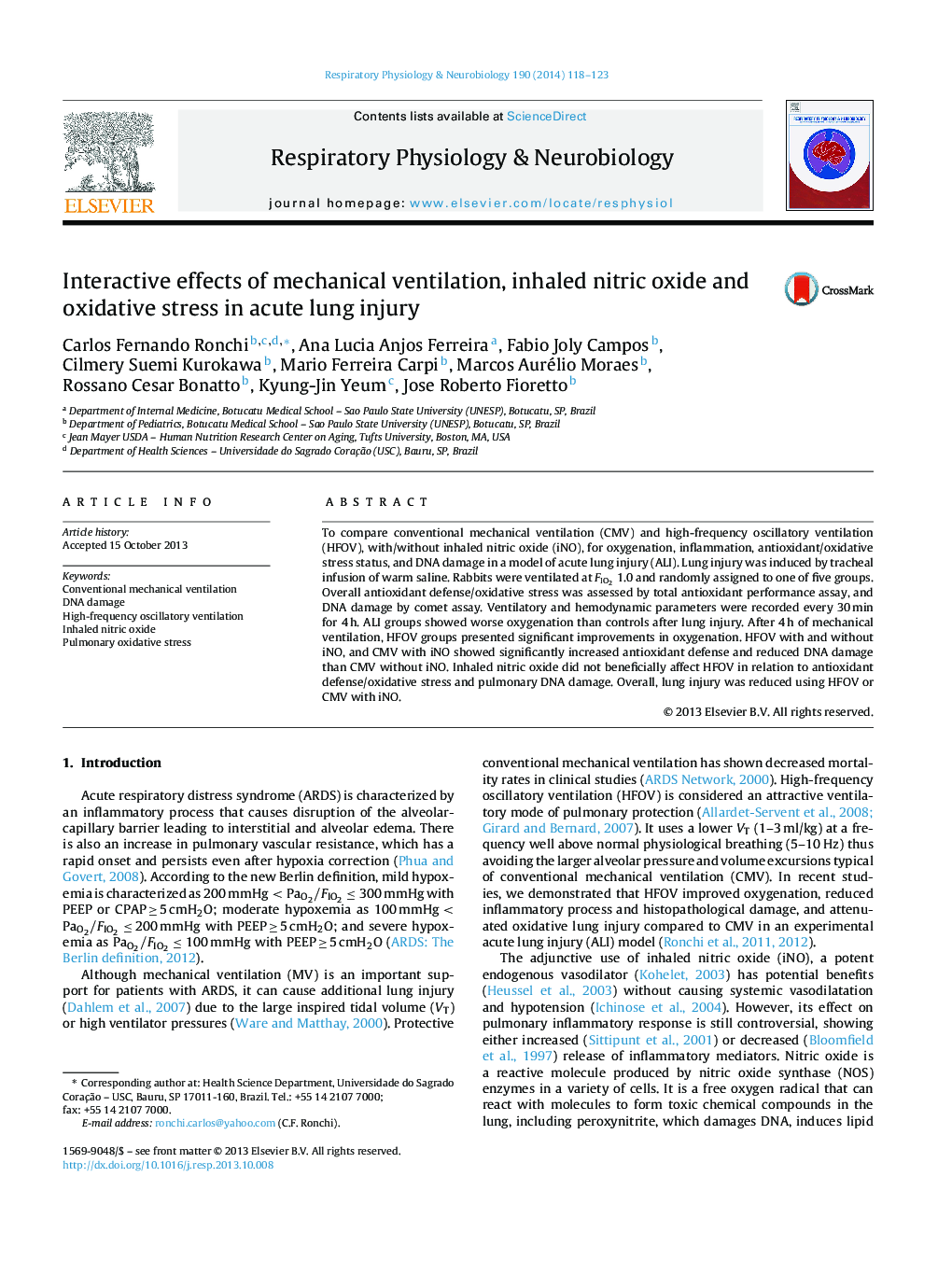| Article ID | Journal | Published Year | Pages | File Type |
|---|---|---|---|---|
| 2847123 | Respiratory Physiology & Neurobiology | 2014 | 6 Pages |
•Oxidative damage has been said to play an important role in pulmonary injury.•High-frequency ventilation has a protective effect against oxidative lung injury.•Lung injury can be induced by conventional mechanical ventilation.•Conventional mechanical ventilation with inhaled nitric oxide reduces DNA damage.
To compare conventional mechanical ventilation (CMV) and high-frequency oscillatory ventilation (HFOV), with/without inhaled nitric oxide (iNO), for oxygenation, inflammation, antioxidant/oxidative stress status, and DNA damage in a model of acute lung injury (ALI). Lung injury was induced by tracheal infusion of warm saline. Rabbits were ventilated at FIO2FIO2 1.0 and randomly assigned to one of five groups. Overall antioxidant defense/oxidative stress was assessed by total antioxidant performance assay, and DNA damage by comet assay. Ventilatory and hemodynamic parameters were recorded every 30 min for 4 h. ALI groups showed worse oxygenation than controls after lung injury. After 4 h of mechanical ventilation, HFOV groups presented significant improvements in oxygenation. HFOV with and without iNO, and CMV with iNO showed significantly increased antioxidant defense and reduced DNA damage than CMV without iNO. Inhaled nitric oxide did not beneficially affect HFOV in relation to antioxidant defense/oxidative stress and pulmonary DNA damage. Overall, lung injury was reduced using HFOV or CMV with iNO.
